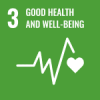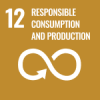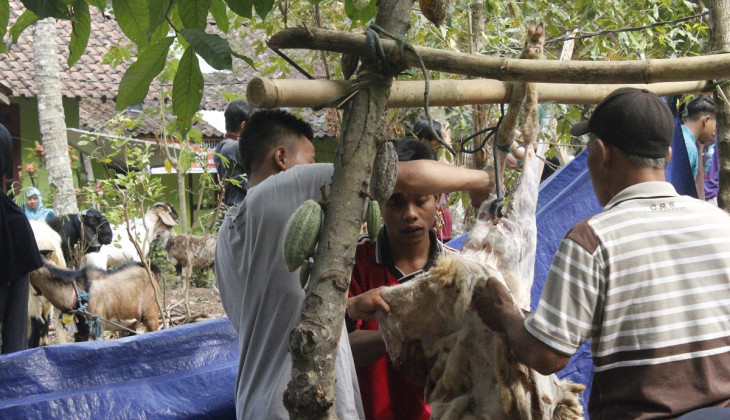Every year, Muslims celebrate Eid Al-Adha; however, it should be remembered that the sacrificial committee needs to be equipped with sufficient knowledge. Apart from mastering the correct slaughtering techniques, the committee also needs to pay attention to hygienic meat handling.
This issue was raised in the Training of Animal Slaughter and Hygienic Handling of Sacrificial Meat in the Covid-19 Era (6th Generation) held by the Faculty of Animal Science UGM on Monday (29/6).
Ir. Nanung Danar Dono, S.Pt., MP., Ph.D., IPM., ASEAN.Eng as a speaker at the event, said that during the pandemic, he reminded that public health protocols must be considered when slaughtering sacrificial animals. Nanung appealed to the sacrificial committee to keep their distance during the slaughtering process, to provide water and soap or hand sanitizers, and not to involve children, the elderly, and sick people in the slaughtering process. Shohibul also does not have to be present at the time of slaughter.
“The committee must also pay attention to the condition of the area, whether it is safe according to information from the government. If the situation is not possible, it can be entrusted to a socio-religious institution, and sacrificial animals should be slaughtered in the government’s official slaughterhouse”, said Nanung.
If the situation is safe, slaughter can still be done in the village/mosque by observing strict health protocols. The committee is obliged to reduce crowds by reducing the number of committees, limiting/reducing the number of cattle slaughtered, dividing slaughtering time into 3-4 days, and dividing slaughtering locations into 3-4 places. The committee chairman/chairperson must also be firm to this health protocol.
He also explained that slaughtering sacrificial animals must pay attention to several conditions, including the type of livestock, age of animals, livestock health, and slaughter time.
Types of livestock that are legal for sacrifice are cows, goats, sheep, buffalo, and camels. The animal sacrificed age is considered sufficient if it has changed a pair of front teeth or for a cow/buffalo it is equal to 1.5-2 years, a goat/sheep is 1.5 years, and a camel is five years old.
Sacrificial cattle must also meet health requirements, including that they are healthy and are not disabled. Cattle are slaughtered on the day of Nahar or Eid al-Adha (10 Dzulhijjah) or tasyrik days (11, 12, and 13 Dzulhijjah).
Meanwhile, Prof. Dr. Ir. Nurliyani, M.S., said that the hygiene of the sacrificial meat needed to be maintained. For hygienic meat, there are several equipment requirements that must be met. First, the knife is sharp, long, does not rust. Second, the plastic mat, meat container, and cutting board must be clean. Third, dry and shaded shelters. Fourth, the slaughterhouse is dry and separate from public facilities. Fifth, there is a special place for meat cutting and offal handling apart from meat handling.
Source: https://ugm.ac.id/id/berita/19716-teknik-penyembelihan-hewan-kurban-di-masa-pandemi



